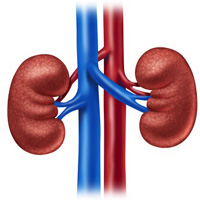Predicting negative ureteroscopy for stone disease – Minimizing risk and cost

Accepted: February 7, 2021
All claims expressed in this article are solely those of the authors and do not necessarily represent those of their affiliated organizations, or those of the publisher, the editors and the reviewers. Any product that may be evaluated in this article or claim that may be made by its manufacturer is not guaranteed or endorsed by the publisher.
Introduction: Urolithiasis is common worldwide, with ureteric stones being a particular burden. Ureteroscopy (URS) is one of the most useful procedures in treating ureteric stones not passed spontaneously; this procedure has a complication risk of 4%. Negative URS, with described rates up to 15%, represents an avoidable patient risk and use of medical resources.
Objectives: To describe rates and identify predictive factors for negative URS and to define strategies which would minimize patient and financial burden from these unnecessary procedures.
Materials and methods: A retrospective cohort study analyzed patients who underwent URS in our Center to treat ureteric stones over a period of 2 years. Patient age, gender, and comorbidities, as well as laboratory and imaging findings, were analyzed. Results: 262 patients underwent URS for ureteric stones. The female population was 50.8% with a mean age of 56.89 years. A total of 78 (29.8%) URS procedures were negative. Univariate analysis showed a higher prevalence of negative URS in female patients, as well as in primary, smaller, and radiolucent stones. At multivariate analysis, a logistic regression model correctly classified 76% of patients, with smaller stone size and radiolucency being significant predictors of negative URS.
Discussion and conclusions: Our Center showed a high rate of negative URS, higher than commonly described in the literature. Female patients tend to have an even higher rate, possibly due to unnoticed passage of stones. Patients with small, radiolucent stones showed the highest rates of negative URS.
Trinchieri A. Epidemiology of urolithiasis.Arch Ital Urol Androl. 1996; 68:203-49.
Trinchieri A. Epidemiology of urolithiasis: an update. Clin Cases Miner Bone Metab. 2008; 5:101-106.
Sorokin I, Mamoulakis C, Miyazawa K, et al. Epidemiology of stone disease across the world. World J Urol. 2017;35:1301-20. DOI: https://doi.org/10.1007/s00345-017-2008-6
Turney BW, Reynard JM, Noble JG, Keoghane SR. Trends in urological stone disease. BJU Int. 2012; 109:1082-7. DOI: https://doi.org/10.1111/j.1464-410X.2011.10495.x
Rukin NJ, Siddiqui ZA, Chedgy ECP, Somani BK. Trends in upper tract stone disease in England: evidence from the Hospital Episodes Statistics (HES) database. Urol Int. 2017; 98:391-6. DOI: https://doi.org/10.1159/000449510
Hesse A, Brändle E, Wilbert D, et al. Study on the prevalence and incidence of urolithiasis in Germany comparing the years 1979 vs.2000. Eur Urol. 2003; 44:709-13. DOI: https://doi.org/10.1016/S0302-2838(03)00415-9
Stamatelou KK, Francis ME, Jones CA, et al. Time trends in reported prevalence of kidney stones in the United States: 1976-1994. Kidney Int. 2003; 63:1817-23. DOI: https://doi.org/10.1046/j.1523-1755.2003.00917.x
Kim JW, Kim JY, Ahn ST, et al. Analysis of patients with urolithiasis visiting the emergency department between 2014 and 2016 in Korea: data from the National Emergency Department Information System. Sci Rep. 2019; 9:16630. DOI: https://doi.org/10.1038/s41598-019-52950-8
Gomes J, Vendeira P, Ribau U, Reis M. Urolitíase e cólica renal. Perspectiva terapêutica em Urologia [Urolithiasis and renal colic. Therapeutic approach in urology]. Acta Med Port. 2002; 15:369-80.
Geraghty RM, Jones P, Somani BK.Worldwide trends of urinary stone disease treatment over the last two decades: a systematic review. J Endourol. 2017; 31:547-56. DOI: https://doi.org/10.1089/end.2016.0895
Pietropaolo A, Proietti S, Geraghty R, et al. Trends of 'urolithiasis: interventions, simulation, and laser technology' over the last 16 years (2000-2015) as published in the literature (PubMed): a systematic review from European section of Urotechnology (ESUT). World J Urol. 2017; 35:1651-1658. DOI: https://doi.org/10.1007/s00345-017-2055-z
Somani BK, Giusti G, Sun Y, et al. Complications associated with ureterorenoscopy (URS) related to treatment of urolithiasis: the Clinical Research Office of Endourological Society URS Global study. World J Urol. 2017; 35:675-681. DOI: https://doi.org/10.1007/s00345-016-1909-0
Geraghty RM, Jones P, Herrmann TRW, et al. Ureteroscopy is more cost effective than shock wave lithotripsy for stone treatment: systematic review and meta-analysis.World J Urol. 2018; 36:1783-1793. DOI: https://doi.org/10.1007/s00345-018-2320-9
Lloyd P, Johnston T, Coode-Bate J, Keoghane SR. A negative ureteroscopy for stone disease: is it acceptable and is it avoidable? Urol New. 2018; 22(6).
Katafigiotis I, Sabler IM, Heifetz EM, et al. “Stoneless” or negative ureteroscopy: a reality in the endourologic routine or avoidable source of frustration? Estimating the risk factors for a negative ureteroscopy. J Endourol. 2018;32:825-30. DOI: https://doi.org/10.1089/end.2018.0291
Lamberts RW, Conti SL, Leppert JT, Elliott CS. Defining the rate of negative ureteroscopy in the general population treated for upper tract urinary stone disease. J Endourol. 2017; 31:266-71. DOI: https://doi.org/10.1089/end.2016.0751
Kreshover JE, Dickstein RJ, Rowe C, et al. Predictors for negative ureteroscopy in the management of upper urinary tract stone disease. Urology. 2011; 78:748-52. DOI: https://doi.org/10.1016/j.urology.2011.03.008
Prattley S, Rice P, Pietropaolo A, et al. Predictors and results of negative ureteroscopy for treatment of consecutive ureteric stones done as a primary procedure: prospective outcomes from a University Hospital. Urol Int. 2019; 103:143-148. DOI: https://doi.org/10.1159/000501658
Rice P, Prattley S, Somani BK.’Negative ureteroscopy’ for stone disease: evidence from a systematic review. Curr Urol Rep. 2019; 20:13. DOI: https://doi.org/10.1007/s11934-019-0878-4
PAGEPress has chosen to apply the Creative Commons Attribution NonCommercial 4.0 International License (CC BY-NC 4.0) to all manuscripts to be published.


 https://doi.org/10.4081/aiua.2021.3.323
https://doi.org/10.4081/aiua.2021.3.323



